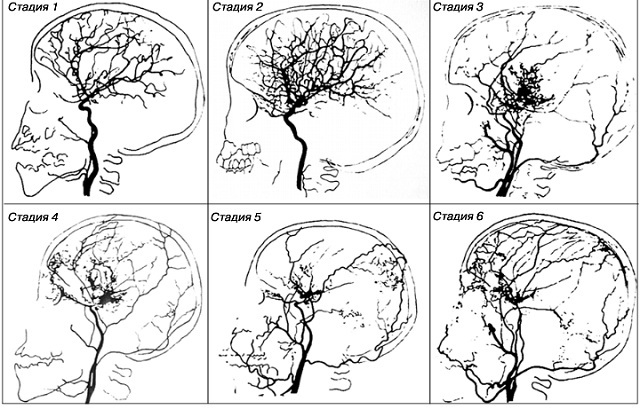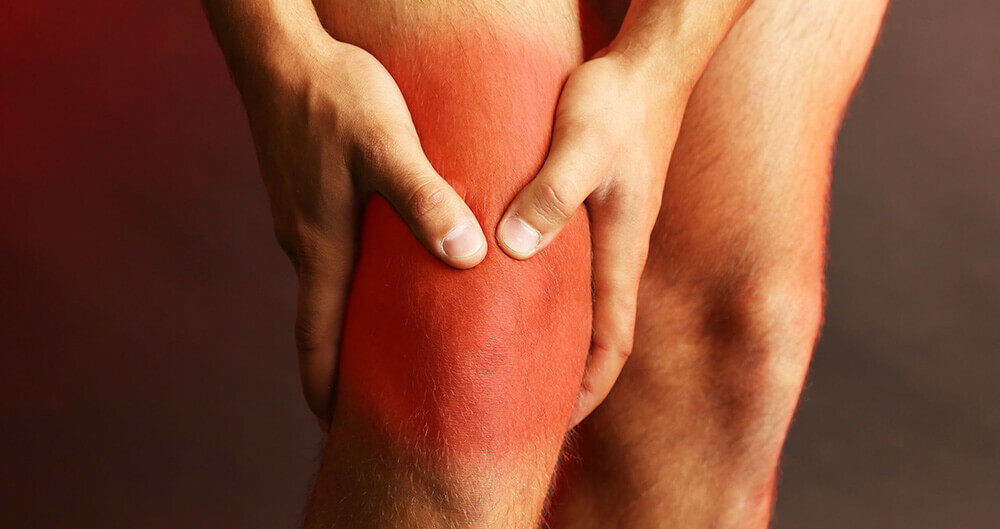Scientific editor: Strokina OATherapist, doctor of functional diagnostics.
July 2019.
ICD-10 code: I00-I02.
Synonyms: rheumatic fever, acute rheumatic fever.
Rheumatic fever - inflammation of the connective tissue with predominant localization process in the cardiovascular system (rheumatic heart disease), as well as in the brain (chorea), joints (arthritis) and skin. The term "rheumatism" is now considered obsolete. In modern terminology, the disease is called acute rheumatic fever.
Its development is closely associated with acute or chronic preceding nasopharyngeal infection (e.g., pharyngitis), caused by streptococcus. In the case of streptococcal infection occurs direct or indirect injurious effect of its components and toxins to the body with the development of immune inflammation.
An important role to the genetic factors, as evidenced by a more frequent incidence of children from families in which one of the parents suffers from rheumatism.
The disease more susceptible children and adolescents aged 7 to 15 years.
Rheumatic fever is a chronic, progressive prazhenie heart and its valves and is the most common cause of heart disease in children in the world1.
However, the incidence rate has been steadily declining. This is due to improved living conditions, as well as the widespread use of antibiotics for the treatment of streptococcal infections.
symptoms of rheumatism
Rheumatic fever is characterized by a variety of symptoms and flow variability. As a rule, it occurs at school age, at least in pre-school and practically does not occur in children younger than 3 years.
In typical cases, the first outward signs of rheumatic fever:
- pain in the joints which appear 2-4 weeks after tonsillitis or pharyngitis,
- fever up to 38C, signs of intoxication (fatigue, weakness, headache).
One of the earliest signs of rheumatic fever are joint pain (rheumatoid arthritis).
Rheumatoid arthritis tend acute onset, involvement of large or medium-sized joints (usually the knee, ankle, elbow), fast reverse the development process.

Photo: large joints, rheumatoid arthritis stricken
Signs of cardiac disease (heart pain in lesions of the pericardium, palpitations, shortness of breath) - a mandatory and important sign of acute rheumatic fever. Infestation inner and outer lining of the heart (the pericardium and endocardium).
It is worth noting that in childhood and adolescence are the first symptom most disorders of the heart, but in adulthood and old age - arthritis2.
More often, especially early in the disease, there are various manifestations of asthenic (lethargy, malaise, fatigue).
For rarer symptoms of rheumatic fever include skin lesions: of annular rash and rheumatic nodules.
Of annular rash (erythema annulare) - dull pale pink rash as a thin annular rim, not elevated above the surface of the skin and disappearing under pressure. The rash is found in 4-17% of patients with rheumatic diseases mainly on the peak and usually is transient in nature.

Photo: annular erythema, site of the Department of dermatology Tomsk Military Medical Institute
A rare sign of acute rheumatic fever - chorea (brain damage). Among its symptoms include a sudden change in handwriting, grimacing, slurred speech, general restlessness. Sometimes it comes to the fore symptoms of muscle weakness: a man can not sit, walk, impaired swallowing process. listed symptoms aggravated by excitement, sometimes during physical exertion and tested during sleep.
Subcutaneous rheumatoid nodules - rounded, dense, slow-moving, indolent, single or multiple formation localized in the area of large and medium-sized joints, spinous processes of the vertebrae, in the tendons. At the present time it is rare, especially in the severe form of rheumatism, saved from a few days to 1-2 months, then pass.
Nodules rarely nablyudyutsya during the first weeks of acute rheumatic attack. They usually occur after a month of illness and are more common in patients who have rheumatic activity persisted for weeks or months.

Photo: rheumatoid nodules in the elbow joint (site of the Department of dermatology Tomsk Military Medical Institute)
Pain in the abdomen, lungs, kidney, liver and other organs for rheumatism currently extremely rare, mainly in severe its course.
The frequency of symptoms of acute rheumatic fever3
- Cardia (heart disease) - 90-95%;
- Rheumatoid arthritis (joint disease) - 60-100% of cases;
- Rheumatic chorea - 6-30% of cases, especially in children;
- Annular (of annular) Erythema - 4-17%;
- Rheumatoid nodules - 1-3%.
Diagnostics
patient complaints
Of great importance in the diagnosis of acute rheumatic fever have examination and the patient's complaints. Joint pain, cardiac auscultation noise, temperature rise, the detection characteristic of cutaneous manifestations, above brain disorders - all these are the criteria of diagnosis acute rheumatic fever.
analyzes
Laboratory parameters in patients with rheumatism reflect signs of streptococcal infection, the presence of inflammatory reactions and immunopathological process.
The active phase determined4:
- leukocytosis,
- increased erythrocyte sedimentation rate,
- titers increase ASL-O(Antistreptolisin-O)
- C-reactive protein (CRP),
- negative rheumatoid factor.
instrumental methods
ECG. An electrocardiogram is often detected arrhythmias.
Chest X-ray. Possible to detect signs of damage lung tissue (rheumatoid pneumonitis).

Photo: picture pneumonitis on X-ray
X-rays of the joints. The need for difdiagnostiki with other arthritis.
ultrasound of the heart. Because the heart is affected most frequently in acute rheumatic fever, echocardiography - the main method to identify structural changes in the valves (often affects the mitral valve, aortic and tricuspid less) and signs of inflammation pericardium.
Computed tomography of the lungs. It is used in special cases to detect rheumatic pneumonitis and thromboembolism of small branches of the pulmonary artery.
rheumatism treatment
rheumatism treatment is based on the early appointment of a comprehensive therapy aimed at the destruction of streptococcal infection, suppression of inflammatory activity, as well as on the development or progression of prevention of vice heart.
Therapy can be performed as an outpatient or in a hospital.
And stationary and out-patient treatment requires mandatory use of antibiotics, which are selected based on sensitivity to them streptococcus. The most frequently used drugs penicillin.
Treatment in hospital
In the acute stage of the disease treatment is carried out only in a hospital. There you can spend the elimination of chronic foci of infection, in particular, for remote operations tonsils undertaken 2-2.5 months from the onset of disease symptoms in the absence of activity process.
The main task after subacute is to achieve complete remission and restore the functional capacity of the cardiovascular system. For this purpose, patients assigned outpatient treatment and observation.
Ambulatory treatment
In outpatient treated, usually patients with chronic disease or dolechivatsya patients after hospital.
The patient is prescribed medication, nutritional correction and remedial gymnastics, which are determined individually taking into account the characteristics of the disease and especially the severity of the heart.
Antibiotics for rheumatism
Antibiotic therapy - an important link in the treatment of rheumatism. Instead, it categorically can not be used folk remedies. In most cases, they only aggravate the situation.
In the presence of chronic tonsillitis, With frequent exacerbations focal infection duration of treatment with penicillin increased or further use another antibiotic - amoxicillin, macrolides (azithromycin, roxithromycin, clarithromycin), cefuroxime axetil, other cephalosporins in age dosage.
anti-inflammatory drugs
Antirheumatic therapy provides one of the non-steroidal anti-inflammatory drugs (NSAIDs), which is administered alone or in combination with hormones depending on the evidence.
NSAIDs are used at least 1-1,5 months to eliminate signs of activity. The drug of choice is diclofenac.
Prednisolone advantageously administered for acute rheumatic fever with severe carditis (inflammation of the heart) in an initial dose prescribed for 10-14 days to obtain the effect, then the daily dose reduced every 5-7 days under the control of clinical laboratory parameters, in the following formulation gradually overturned.
In addition to the antibacterial and anti-inflammatory therapy symptomatic therapy if the following conditions: Heart disease, when symptoms of congestive heart failure:
- diuretics,
- calcium channel blocker (amlodipine),
- Beta-blockers (carvedilol, metoprolol, bisoprolol)
- cardiac glycosides (digoxin).
In the inactive phase of disease patients pakazano sanatorium treatment.
The resort continue initiated in the hospital therapy, treat lesions of a chronic infection, performed corresponding health and fitness regime with differentiated physical activity, physical therapy, tempering procedures.
relapse prevention
The next stage of the complex therapy of rheumatic fever involves prevention of relapses and disease progression.
For this purpose use preparations of penicillin prolonged action, preferably bicillin 1, the first which introduction is performed even during patient treatment, and subsequently - 1 every 3 weeks year-round. In rheumatoid arthritis without involving bitsillinoprofilaktiku heart was carried out for 5 years after the last attack.
All patients with acute rheumatic fever, should be kept under medical observation rheumatologist. Regularly, 2 times per year, is carried out-patient examination, including laboratory and tool methods; prescribe the necessary corrective measures, remedial gymnastics.
In spring and autumn, along with carrying out bitsillinoprofilaktiki shows month course of NSAID.
In the formation of heavy rheumatic heart disease surgical treatment - prosthetic valves affected.
prevention
Prevention rheumatism divided into primary and secondary.
Primary prevention is aimed at the prevention of rheumatic fever (acute rheumatic fever) and includes:
- Increased immunity (hardening, the load alternation and rest, nutrition, et al.).
- Detection and treatment of antibacterial drugs for acute and chronic streptococcal infection.
- Preventive measures are predisposed to the development of rheumatic fever Children from families in which there are cases of rheumatism and other rheumatic diseases; nasopharyngeal infection frequently ill; having adenoid or undergoing an acute streptococcal infection.
Secondary prevention is aimed at preventing relapses and disease progression in patients with rheumatic conditions dispensary observation.
Forecast for rheumatism
At present a direct threat to the life of acute rheumatic fever is not responsible. The prognosis is most influenced by the degree of damage to the heart. And when time begun treatment of the primary lesion of its ends with recovery.
Formation of valvular heart disease, often with the development of mitral insufficiency in children is defined in 20-25% of adolescents in the 30% of adults in the 35-49% cases at the first attack, mainly in severe, prolonged or latent disease course (acute form becomes chronic rheumatic fever).
- 1, 2. Steven J Parrillo, DO. Rheumatic Fever in Emergency Medicine. - Medscape, Feb 2018.
- 3. Belov BS Acute rheumatic fever: state of the art. - Russian medical journal, №6 from 26.03.2004.
- 4. Pirinccioglu AG. Measurements of Oxidative Stress Parameters in Children with Acute Rheumatic Fever. - Pediatrics Int, Jul 2019..
- Shostak NA Acute rheumatic fever: a look at the problem in the XXI century. - clinician, №1 from 2010.



